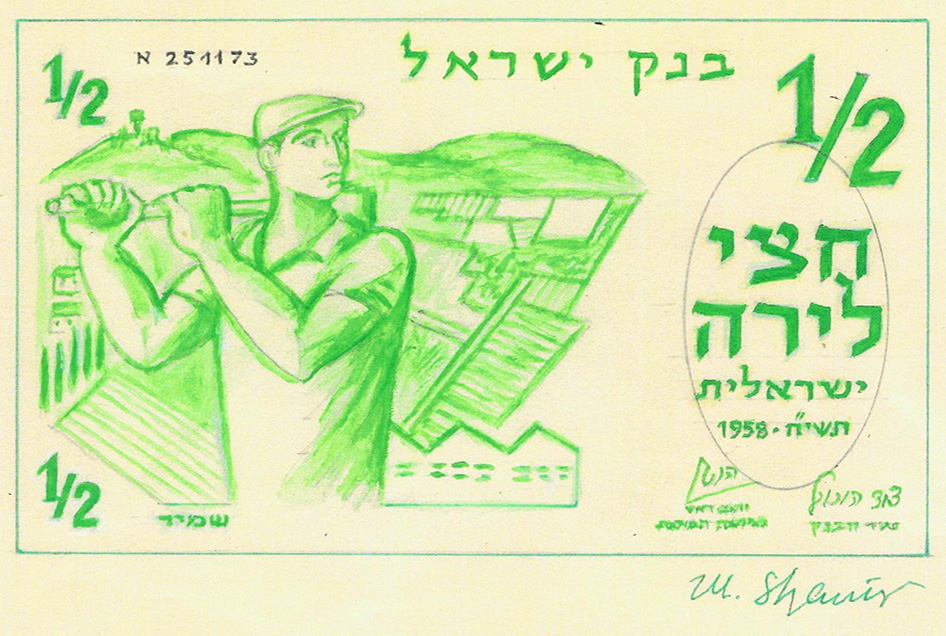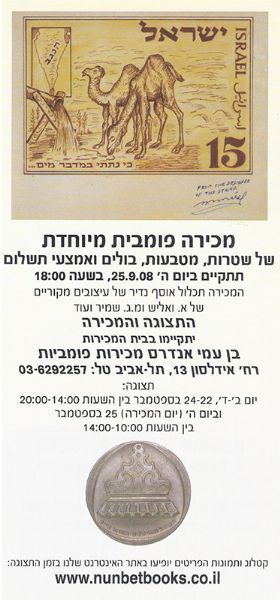Students Annual contest
Collectors, beware of forgeries!

Collectors, beware of forgeries!
In February 2013, a major art collector was offered a number of Shamir Brothers works that were presented as having been signed by the brothers. These comprised of some philatelic and some bank-note items.
A first day cover of the Jerusalem stamp (1949) with a postmark to commemorate the convening of the Constituent Assembly (First Knesset) and next to the stamp a b/w sketch. The signatures of the two brothers on this item are forgeries. The stamp looks real, but the sketch does not look like the coloured sketch that was displayed in the Hebrew Graphics Exhibition at the Tel Aviv Art Museum in 1999. Two more envelopes with the Jerusalem stamp which showed a drawing of a gate in the wall bore a forged signature of M Shamir,
An envelope of the Negev stamp 1953 had on it a dedication "from the stamp designer" [in English]. According to the Philatelic Service catalogue the the stamp design was an “adaptation by Wind-Strussky” of a work by the painter Reuven Rubin. His son, David Rubin, stated categorically that the signature on the envelope is not his father's signature. The envelope shows a drawing by Shamir of the Gulf of Eilat and, in the background in a red haze over the Edom mountains, a crowded city with high-rise buildings. The title - "Eilat and its vision."
A stamp dealer in the Dizengoff Center tried to sell me a similar envelope. That envelope had a number of additional elements: Date - December 1950 [in English], a ship in the Gulf, text of around 50 words in place of the "Eilat and its vision" – the crowded city text - the crowded city, and a signature of M. Shamir – which was fake.
The major collector also received four proposals presented to him as sketches of the Shamir Brothers banknotes of the Bank of Israel in 1959. The 5 Lira and 50 Lira bank-notes looked like unsuccessful replicas of the original notes. Two of the bank-note sketches were created based on sketches that are at the Central Zionist Archives and were displayed at the Tel Aviv Museum.
The forger is not a professional. For the sketch drawing that is supposed to be of the ½ Lira note he combined the agricultural background from the note with the Nahal girl soldier with the figure of the industrial workman from the five Lira note. Anyone who has seen socialist, communist or Zionist posters knows that a worker wearing a cap with a hammer is an icon of an industrial worker and not an agricultural one.
Yoram Shamir


